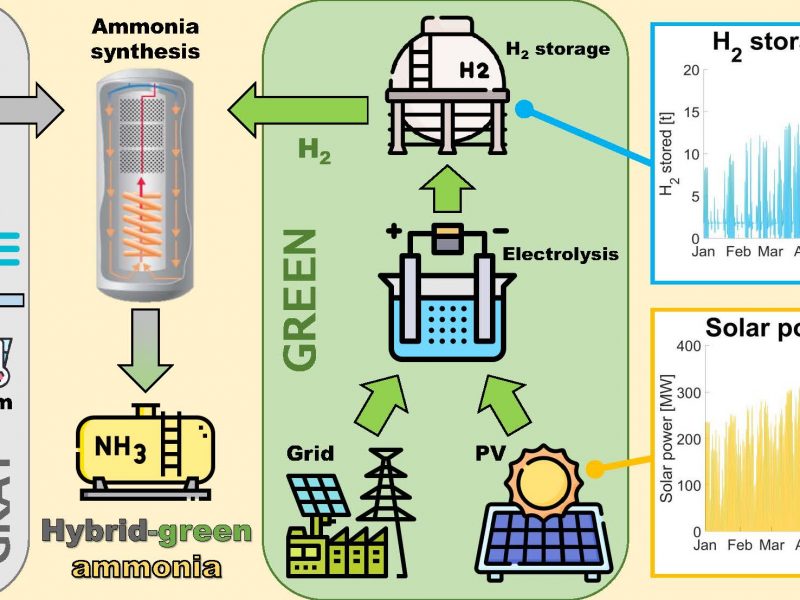AUTHORS: Andrea Isella, Raffaele Ostuni, Davide Manca
ABSTRACT: This paper analyzes the retrofitting of a conventional, “gray†ammonia plant for its partial decarbonization. Specifically, the retrofitting involves the hybridization of the process by providing a certain amount of green hydrogen (i.e. by water electrolysis) for the ammonia synthesis to reduce the demand for the original gray hydrogen route (i.e. by fossil-based steam reforming) and consequently reduce CO2 emissions. As such green hydrogen is produced through an electrolyzer that consumes renewable electric energy, two design configurations are considered: (Option I) the supply of clean electricity from renewable sources; (Option II) the generation of clean electricity by an in-house photovoltaic power plant. Once having analyzed the advantages and limitations of the hybrid plant layouts, the ammonia production costs achieved by the three simulated plants (i.e. the reference “gray†plant and the two hybrid alternatives) are estimated by considering the United States (USA) and European Union (EU) market quotations in 2022 and previsions for 2030 and 2050. The main outcomes are that (i) hybrid-green ammonia proves to be a feasible, environmentally friendly retrofitting option for the ammonia production industry, showing production costs that are no more than 36% higher than gray ammonia; and (ii) Option I achieves better cost-effectiveness than Option II in the USA, while the opposite happens in the EU. Specifically, the resulting 10%-green-on-average hybrid-green ammonia production costs range between +0.3% (EU-2022) and +30.8% (USA-2022) for Option I, and between −1.3% (EU-2022) and +35.3% (USA-2022) for Option II, compared to the reference gray ammonia plant. (iii) Lastly, the projected (i.e. in 2030 and 2050) CO2 avoidance costs associated with hybrid-green ammonia configurations exceed 400 USD/tCO2 in the USA and 500 USD/tCO2 in the EU.

